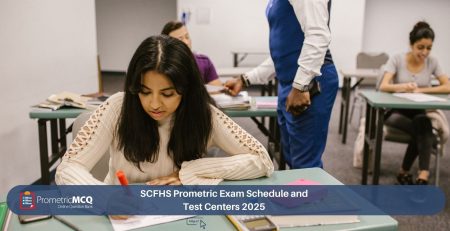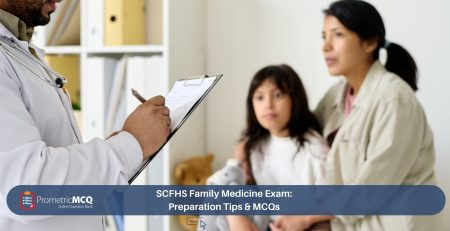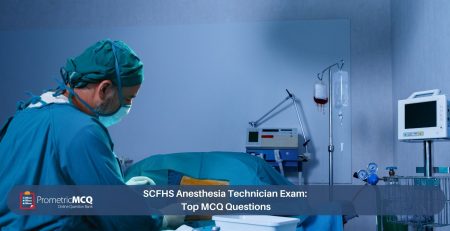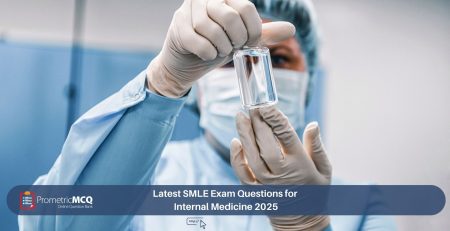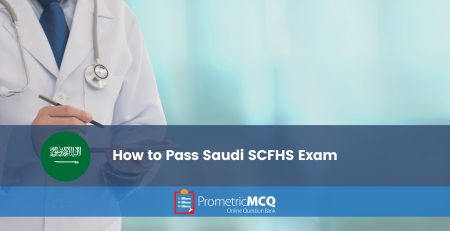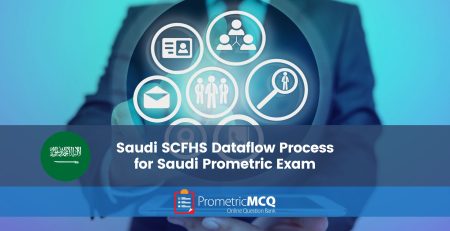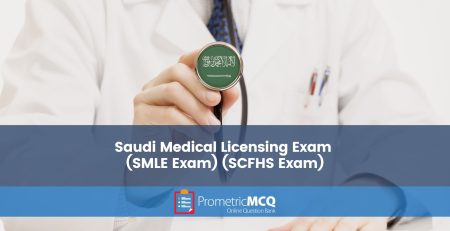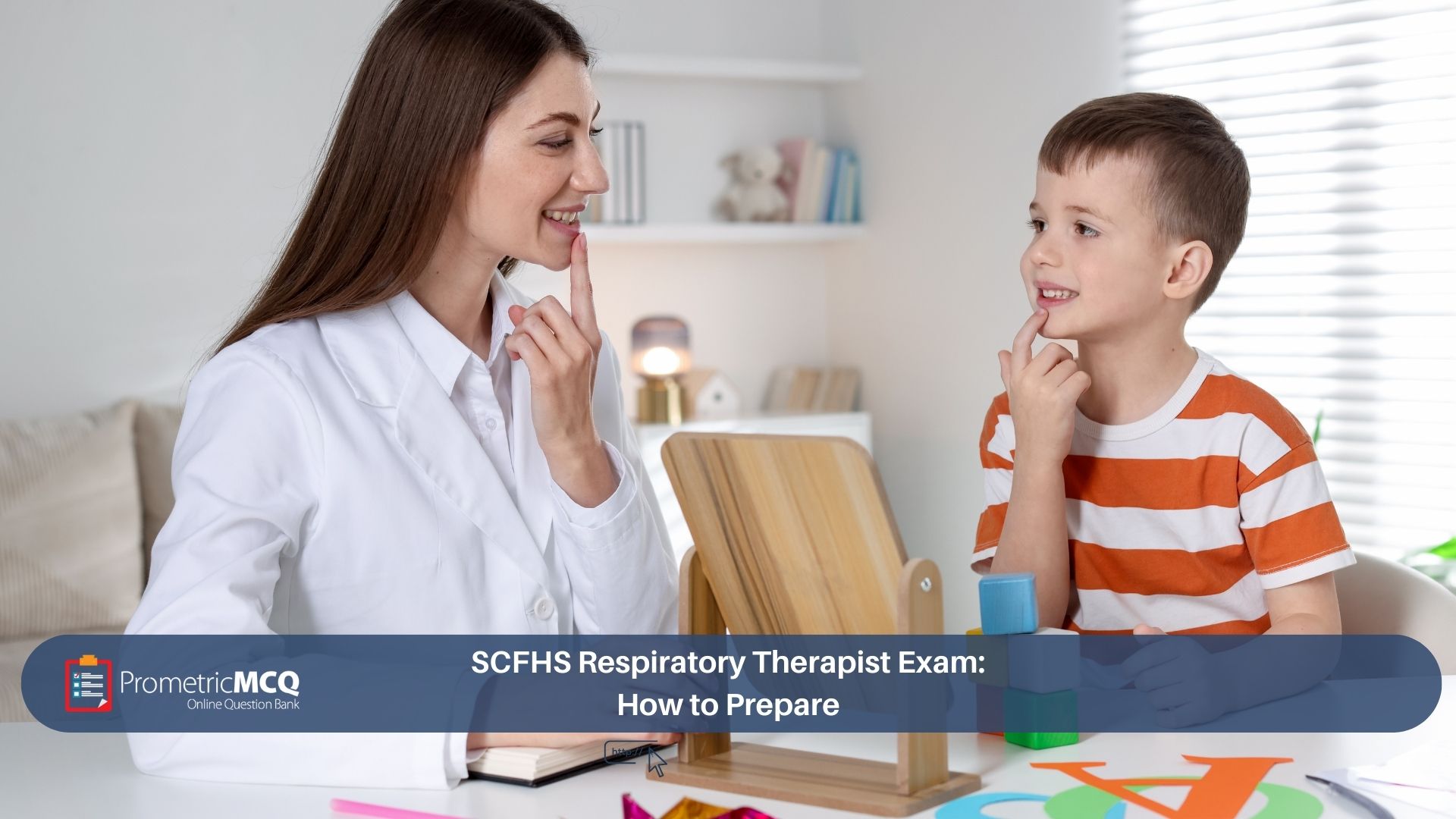
SCFHS Respiratory Therapist Exam: How to Prepare
fatima@prometricmcq.com2025-09-30T01:04:24+00:00Table of Contents
ToggleSCFHS Respiratory Therapist Exam: How to Prepare (2025)
As the healthcare landscape in the Kingdom of Saudi Arabia continues its ambitious expansion under Vision 2030, the demand for highly skilled allied health professionals has never been greater. Respiratory Therapists (RTs) are at the forefront of this demand, playing a critical role in intensive care units, emergency departments, and pulmonary clinics. The Saudi Commission for Health Specialties (SCFHS) ensures that every RT practicing in the Kingdom meets a stringent standard of excellence through the SCFHS Respiratory Therapist Prometric Exam. This is the essential gateway to a rewarding career in Saudi Arabia.
The SCFHS exam is a rigorous, case-based assessment of your clinical competence. It is designed to test your ability to apply the principles of respiratory care in complex, real-world scenarios, not just your ability to recall facts from a textbook. The exam’s Multiple-Choice Questions (MCQs) will challenge your skills in patient assessment, arterial blood gas (ABG) interpretation, mechanical ventilation management, and therapeutic interventions. A strategic, focused, and active preparation plan is not just recommended; it is essential for success.
This ultimate 2025 guide provides a definitive strategy for preparing for and passing the SCFHS Respiratory Therapist exam. We will dissect the exam’s pattern, provide a deep dive into the high-yield syllabus topics, present challenging sample questions with detailed, guideline-based rationales, and conclude with a comprehensive 10-point FAQ section. This guide is your strategic blueprint to transform your knowledge into a passing score.
Key Takeaways for the SCFHS RT Exam
- Mechanical Ventilation is King: This is the largest, most complex, and most critical part of the exam. Master ventilator modes, settings, alarms, and weaning.
- ABG Interpretation Must Be Flawless: You must be able to rapidly and accurately interpret ABGs and recommend appropriate ventilator changes.
- Master Patient Assessment: Be proficient in all aspects of patient assessment, from auscultation to interpreting pulmonary function tests (PFTs).
- Guideline-Based Practice: Your knowledge must align with the latest international clinical practice guidelines (e.g., ARDSNet, GOLD for COPD).
- Active MCQ Practice is Non-Negotiable: The single most effective study method is solving hundreds of case-based questions from a specialized RT question bank.
Deconstructing the SCFHS RT Exam: Pattern and Syllabus
A successful study strategy begins with a clear understanding of the exam’s structure. Knowing the framework is a vital part of your overall SCFHS Prometric exam preparation.
Core Exam Framework
- Administrator: Prometric
- Format: Computer-Based Test (CBT) with 100% MCQs.
- Structure: Typically 150 MCQs for Respiratory Therapist Specialist.
- Duration: Usually 3 hours (180 minutes).
- Scoring: The exam is scored out of 800, with a passing score of 500. There is no negative marking.
High-Yield Respiratory Therapist Syllabus Breakdown
The SCFHS exam covers the full scope of respiratory care practice. A focused study plan will prioritize the most heavily weighted domains.
| Respiratory Care Domain | High-Yield Topics and Key Concepts for 2025 |
|---|---|
| Mechanical Ventilation (~30-35%) | This is the most critical domain. Initiation: Selecting appropriate modes (AC, SIMV, PSV, PRVC) and initial settings (VT, RR, PEEP, FiO2). Management: Adjusting settings based on ABGs and patient condition. Troubleshooting: Responding to high/low-pressure alarms, identifying auto-PEEP. Weaning: Assessing readiness for liberation, conducting spontaneous breathing trials (SBTs). Special Populations: ARDS (lung-protective ventilation), COPD, and asthma. |
| Patient Assessment & Diagnostics (~25-30%) | Bedside Assessment: Inspection, palpation, percussion, auscultation of breath sounds. Arterial Blood Gas (ABG) Interpretation: Systematic analysis of acid-base status and oxygenation. Pulmonary Function Testing (PFTs): Differentiating obstructive vs. restrictive patterns from flow-volume loops and key values (FVC, FEV1, FEV1/FVC). Hemodynamic Monitoring: Basic interpretation of CVP, PAP, and PCWP. Chest Radiography: Recognizing common findings (e.g., atelectasis, pneumothorax, ARDS). |
| Airway Management & Therapeutics (~20-25%) | Airway Management: Endotracheal tube and tracheostomy care, cuff pressure management, suctioning techniques. Oxygen Therapy: Selecting appropriate delivery devices (nasal cannula, masks, HFNC). Aerosolized Medication Therapy: Pharmacology and delivery of bronchodilators, corticosteroids, and mucolytics. Lung Expansion & Bronchial Hygiene: Incentive spirometry, chest physiotherapy (CPT), positive expiratory pressure (PEP) therapy. |
| Cardiopulmonary Pathophysiology (~15-20%) | Understanding the pathophysiology of common respiratory diseases, including COPD, asthma, ARDS, pulmonary embolism, pneumonia, and cystic fibrosis. Basic understanding of cardiac function and common arrhythmias on an ECG is also expected. |
Free SCFHS Respiratory Therapist Exam: Sample MCQs and Rationales
The following questions are designed to simulate the advanced clinical reasoning tested on the SCFHS exam. Analyze each case and its detailed rationale to master the application of respiratory care principles. For a comprehensive preparation, a dedicated QBank of SCFHS Respiratory Exam MCQs is your most critical tool.
Question 1: Mechanical Ventilation
A 55-year-old male with ARDS is being mechanically ventilated in volume control-assist/control (VC-A/C) mode. His settings are: FiO2 0.6, RR 16, Tidal Volume (VT) 400 mL (6 mL/kg of IBW), and PEEP 10 cm H2O. An ABG is drawn: pH 7.30, PaCO2 55 mmHg, PaO2 60 mmHg, HCO3 24 mEq/L. His plateau pressure is 32 cm H2O. What is the most appropriate ventilator change to make?
- Increase the FiO2 to 0.7.
- Increase the tidal volume to 500 mL.
- Increase the respiratory rate to 20.
- Increase the PEEP to 15 cm H2O.
Correct Answer: C (Increase the respiratory rate to 20.)
Rationale: This question tests your knowledge of lung-protective ventilation for ARDS and ABG interpretation. The ABG shows uncompensated respiratory acidosis (low pH, high PaCO2) and hypoxemia (PaO2 60 mmHg). The primary goal in ARDS is to maintain a low tidal volume (6 mL/kg) and keep the plateau pressure (Pplat) below 30 cm H2O to prevent ventilator-induced lung injury (VILI). The current Pplat is already high at 32 cm H2O. Therefore, increasing the tidal volume (Option B) is contraindicated. To correct the respiratory acidosis, the minute ventilation must be increased. Since the tidal volume cannot be increased, the only appropriate action is to increase the respiratory rate. This will increase CO2 removal and help normalize the pH. Increasing FiO2 or PEEP would address oxygenation, but the primary acid-base disturbance is the high PaCO2.
Why other options are incorrect:
A & D: These options address the hypoxemia, which is a concern, but the more immediate problem to address is the significant respiratory acidosis, which can be corrected by increasing the respiratory rate.
B: Increasing the tidal volume would violate the core principle of lung-protective ventilation and worsen the already high plateau pressure, increasing the risk of VILI.
Question 2: ABG Interpretation
A 68-year-old female with a severe COPD exacerbation is in the emergency department. She is breathing on a 2 L/min nasal cannula. Her ABG results are: pH 7.28, PaCO2 65 mmHg, PaO2 55 mmHg, HCO3 34 mEq/L. How would you interpret this blood gas?
- Uncompensated respiratory acidosis with hypoxemia.
- Partially compensated metabolic acidosis with hypoxemia.
- Fully compensated respiratory acidosis with hypoxemia.
- Partially compensated respiratory acidosis with hypoxemia.
Correct Answer: D (Partially compensated respiratory acidosis with hypoxemia.)
Rationale: Let’s use a systematic approach:
1. Look at the pH: 7.28 is low (acidosis).
2. Look at PaCO2 and HCO3: PaCO2 is high at 65 mmHg (respiratory cause). HCO3 is high at 34 mEq/L (metabolic compensation).
3. Determine the primary problem: The pH is acidotic, and the PaCO2 is high, so the primary problem is respiratory acidosis.
4. Look for compensation: The HCO3 is elevated, which is the kidney’s way of compensating for the chronic CO2 retention typical in COPD. Because the pH is still abnormal (not within the 7.35-7.45 range), the compensation is partial.
5. Look at oxygenation: The PaO2 is 55 mmHg, which is low (hypoxemia).
Therefore, the correct interpretation is partially compensated respiratory acidosis with hypoxemia. This is a classic ABG for a severe COPD exacerbation.
Frequently Asked Questions (FAQs) for the SCFHS RT Exam
The SCFHS uses a scaled score system. The exam is scored out of 800, and the official passing score is 500. This is a standardized score, not a direct percentage, which ensures fairness across different exam versions.
The SCFHS exam is conceptually very similar to the NBRC’s Therapist Multiple-Choice (TMC) exam. Both are CBTs that heavily test clinical reasoning in mechanical ventilation, patient assessment, and therapeutics. If you have prepared for the NBRC exams, you have a very strong foundation for the SCFHS exam. For official information on US standards, you can refer to the National Board for Respiratory Care (NBRC).
No, the SCFHS exam is based on international, evidence-based clinical practice guidelines. You should focus your studies on guidelines from major global bodies like the Global Initiative for Chronic Obstructive Lung Disease (GOLD), the Global Initiative for Asthma (GINA), and the ARDSNet protocols.
You need to be an expert at differentiating between obstructive and restrictive disease patterns based on the key PFT values (FVC, FEV1, FEV1/FVC ratio, TLC) and the shape of the flow-volume loop. You should also be able to assess the significance of a bronchodilator response.
Yes, Primary Source Verification (PSV) by DataFlow is a mandatory part of the SCFHS licensing process. It is an independent verification of your respiratory therapy degree, professional license, and work experience. A positive DataFlow report is required to get your final Saudi SCFHS license.
Repetition is key. Use a question bank that provides numerous ABG scenarios. Practice a consistent, systematic interpretation method every single time until it becomes second nature. Focus on identifying the primary disorder and the state of compensation.
The SCFHS typically allows candidates four attempts to pass the licensing exam. There are specific rules regarding the waiting period between attempts. A failure should prompt a serious re-evaluation of your study methods, with a renewed focus on your weak areas.
You should have a deep understanding of the most common conventional modes: Volume Control (VC), Pressure Control (PC), in both Assist/Control (A/C) and SIMV variations, as well as Pressure Support (PSV). While awareness of more advanced modes is helpful, mastery of these core modes is essential.
It is very important. You should expect questions on the management of common neonatal conditions like Respiratory Distress Syndrome (RDS), the basics of neonatal resuscitation (NRP), and the treatment of pediatric conditions like asthma and croup.
The consensus among successful candidates is clear: the most effective strategy is intensive, active learning with a high-quality question bank designed for a respiratory therapy board-level exam. Solving hundreds of clinical scenarios and studying the rationales is the best way to master the material.
Conclusion: Your Path to a Respiratory Therapy Career in Saudi Arabia
The SCFHS Respiratory Therapist Exam is a rigorous and comprehensive assessment designed to ensure that RTs practicing in the Kingdom are among the best in the world. It is a challenging but achievable goal for the well-prepared candidate. By building a strong foundation in the principles of mechanical ventilation and patient assessment, and by committing to a disciplined study strategy centered on high-quality MCQ practice, you can approach your exam with the utmost confidence. Passing the SCFHS exam is your definitive step toward a successful and impactful career in the advanced healthcare landscape of Saudi Arabia.
Ready to Master Ventilation and Ace Your Exam?
Our premier Respiratory Therapy question bank is filled with high-yield clinical scenarios, detailed, guideline-based rationales, and full-length simulated exams designed to cover the entire SCFHS syllabus and ensure your success.

